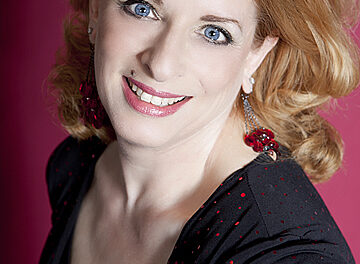In their 79 seasons, Brevard Music Center‘s Summer Festival has become a fixture on America’s classical landscape, presenting established luminaries and top professionals in performance while training the musicians, singers, teachers, and stars of succeeding generations. Of course, the landscape keeps changing, sometimes fundamentally. Competition titles can be seen congregating in distinguished soloists’ resumes and websites, strategically listed in their official bios. Epic competitions are streamed live for days and weeks from Texas and Russia, generating unprecedented interest and controversy. So when the winners of Brevard’s annual Concerto Competition are announced, there’s considerably more excitement now than there was a few short years ago. Adding to the distinction of winning the 2015 competition was the opportunity to perform at the partially upgraded Whittington-Pfohl Auditorium, where an improved stage has been thrust over the space formerly reserved for the orchestra pit, bringing the winners dramatically closer to the audience. Ken Lam conducted the BMC Orchestra in the “Soloists of Tomorrow” program as six winners played complete movements from concertos by Sibelius, Nielsen, Ravel, Rachmaninoff, Chopin, and Keiko Abe.
Knowing that concertos are usually in three movements, I estimated that the program would last 50-60 minutes, or the length of two concertos when each winning soloist plays one movement from his or her chosen piece. For a couple of reasons, the program was significantly longer: winners invariably chose the longest movement from their concerto when there was a choice, and there was a little more furniture moving than we normally encounter at a symphony concert. Nobody except perhaps violinist Jesse Kasinger, with Ravel’s Tzigane, played a piece that was shorter than ten minutes. Patrick Lin chose the opening Allegro moderato from the Sibelius Violin Concerto, which often runs more than twice that length in recordings, and when the Steinway was finally rolled onstage during the second half of the program, Sinyu Kwok chose another long opening movement, the Allegro maestoso from Chopin’s Piano Concerto No. 1. With admirable efficiency, it wasn’t necessary to move the piano when John Schindler came onstage to play the concluding Allegro scherzando from Rachmaninoff’s Piano Concerto No. 2. Instrumentation was a little more unusual before intermission, so after Dominic Dagostino played the opening Allegro moderato from Nielsen’s Flute Concerto, we waited until a pathway was cleared for a huge marimba for Zuri Wells, who played Abe’s Prism Rhapsody. Keeping the program lively, Lam picked up a mic and brought one of the winners back during each of the changeovers for a brief interview, huddling with Lin as the marimba was wheeled in and with Kasinger as he gave way to the piano. Taking his cue from Christopher Riley’s popular From the Top on NPR, Lam kept the interviews light and personal.
Wells, a senior at Michigan State, gave the first truly star-quality performance of the afternoon in Abe’s Prism Rhapsody. A cacophonous percussion assault began the piece, melting into a mellow alto flute spot as Wells readied herself, three mallets in each hand. After the expected block chords, Wells switched to the more conventional two mallets per hand, which allows for speedier play. Another cacophonous outburst, with a whistle mixed into the percussion, led into a longer three-mallet episode than the first. The next speed-up was more radical as Wells switched to one mallet per hand for her most intense cadenza so far. Then the French horn began to figure more prominently in the orchestral sections as they became more lyrical, with more harmonious brass mixed into the percussion. Another two-mallet section also softened the marimba’s answer before a brief French horn interlude gave way to an amazing one-mallet-per-hand assault. Seeming to take one last breath before unleashing her final barrage, Wells accelerated the already-presto pace to a blurry eruption that was nothing short of orgiastic.
Kasinger was nearly as proficient as Wells on an instrument that boasts far more repertoire, displaying all the self-assurance and ferocity of attack. His double-bowing could have been more precise for the Tzigane, but Kasinger’s musicality never faltered, particularly when he navigated passages Ravel had strewn with harmonics and pizzicatos. Like Wells, he performed the piece rather than merely playing it.
After the taciturn accompaniment to the Ravel, Lam and the BMC Orchestra vigorously drove the introductory section of the Chopin, the violins nicely transparent in unveiling the main theme. Kwok’s traversal of the long Allegro maestoso was the most polished performance of the afternoon, often very Chopinesque, but perhaps wanting more jaggedness alternating with the polished elegance, more swelling romance and urgency.
Perhaps the most gratifying surprise of the “Soloists of Tomorrow” concert was the 16-year-old Schindler in the Allegro scherzando from Rachmaninoff’s Concerto No. 2, a performance as remarkable in its way as Wells’s or Kasinger’s. A tall and somewhat gangly young man, Schindler was stronger than he was precise in his first entrance, but when he reached the softer passages, he was quite precocious in his sensitivity. That soothing patch seemed to calm him, for he soon showed the control he could bring to the power passages. When the violas introduced the big tune so beautifully, Schindler seemed to absorb the spirit, repeating it with robust feeling, caressed with just a touch of rubato.
As noted, the program included two additional concerto excerpts. Lin had an admirable touch, and his deft double-bowing infused the music of the Allegro moderato with all the flavor Sibelius had written into it. And Dagostino’s exchanges with the clarinet in Nielsen’s Flute Concerto had a bird-like flightiness.











